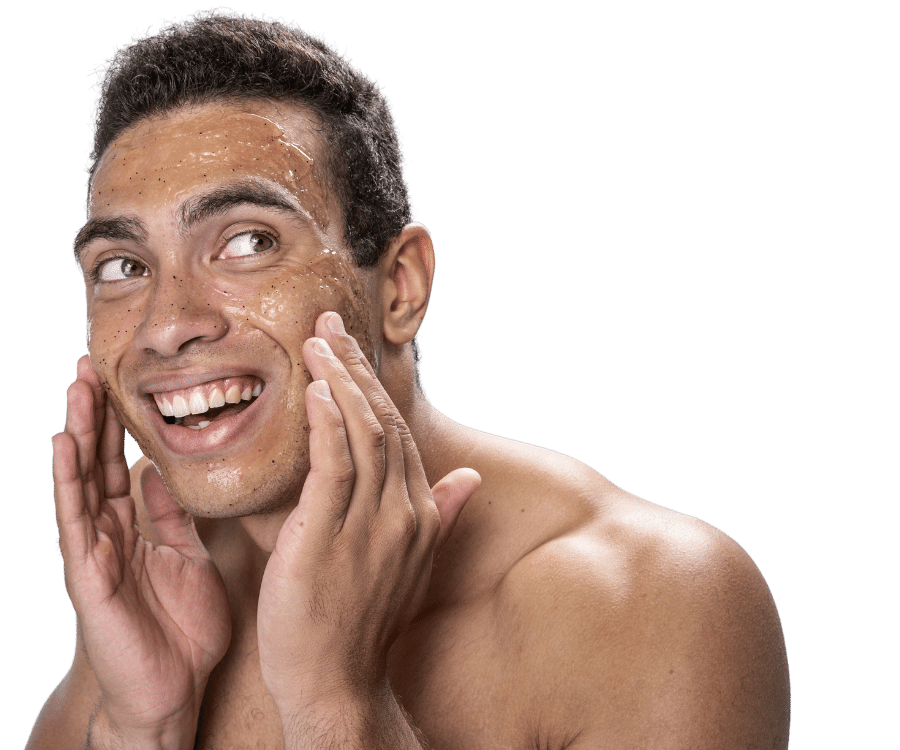Valley Dermatology
Men’s Health Month – Skin Care Tips

Skin Care Tips for Men
#1: Remind Men to Get Regular Skin Cancer Screenings
Let’s remind our men that the dermatologist is their partner in skin health! According to the CDC, the leading causes of death among men are heart disease, cancer, and accidental death. Men are more likely to skip health checkups, including skin cancer screenings, and are more likely to take chances with their health choices.
Encourage men to see a dermatologist for regular skin exams and to learn about their family health history. Many of the major health risks that men face can be prevented with a healthy lifestyle: regular exercise, a healthy diet, not smoking, stress reduction, and alcohol consumption in the moderate range (no more than two drinks a day) if at all. Regular checkups and screening tests can spot disease early; when it’s easiest to treat.

#2: Melanoma in Men
The most common form of cancer in the U.S. is skin cancer. Melanoma is the most serious type of skin cancer and affects men and women differently. Men are more at risk of developing melanoma than women and according to the American Academy of Dermatology melanoma seems to strike men harder because men are typically less knowledgeable about skin cancer prevention and detection as women and therefore are less likely to apply sunscreen. This lack of knowledge may delay or prevent early diagnosis and treatment of melanoma and other nonmelanoma skin cancers. According to The Skin Cancer Foundation:
- An estimated 207,390 cases of melanoma will be diagnosed in the U.S. in 2021. Of the invasive cases, 62,260 will be men and 43,850 will be women.
- An estimated 7,180 people will die of melanoma in 2021. Of those, 4,600 will be men and 2,580 will be women.
- Melanoma accounts for 6 percent of new cancer cases in men, and 5 percent of new cancer cases in women.
- Men age 49 and under have a higher probability of developing melanoma than any other cancer. From ages 15 to 39, men are 55 percent more likely to die of melanoma than women in the same age group.
- From age 50 on, significantly more men develop melanoma than women. The majority of people who develop melanoma are white men over age 55. But until age 49, significantly more non-Hispanic white women develop melanoma than white men (one in 156 women versus one in 230 men). Overall, one in 27 white men and one in 40 white women will develop melanoma in their lifetime.
When detected early, the 5-year survival rate for melanoma is 99%. Melanoma is the deadliest form of skin cancer with most cases attributable to UV (ultraviolet) exposure. Every person—regardless of age, race, or ethnicity—should use a daily sunscreen to help protect against UV rays. Additionally, researchers believe that a major cause may lie in men’s skin and how it differs in thickness than women’s skin. Men have thicker skin with less fat beneath and contain more collagen and elastin to keep the skin firm and tight. These differences may make men’s skin more likely to be damaged by the sun’s ultraviolet rays.

#3: Rashes Men Get (And Don’t Talk About)
Most men avoid seeing a doctor until the last possible minute, no matter what seems to be ailing them. Whether it’s a head cold, a twisted ankle, or an unidentified rash that’s driving them crazy, men will self-diagnose and feel good about it. But ask any man who has had an attack of athlete’s foot or a bout with jock itch that won’t go away, and they just might concede that they need medical help every now and then. Below, are the most common rashes that men get and don’t like to talk about!
Rashes on the scalp. You might just think you are suffering from dandruff or dry scalp, but be careful, because a rash in your scalp could be a sign of a bacterial infection in your hair follicles.
Eczema. A type of rash that will show itself by having swollen patches and blisters that are visible on just about any part of your body.
Jock itch. In addition to heat and moisture, jock itch can be caused when skin rubs against clothing and even other areas of the skin. The resulting redness and irritation is enough to drive a man crazy and want him to itch the affected area uncontrollably at times. Of course, that only makes the condition worse.
Athlete’s foot. The same type of fungus that causes jock itch can also cause the annoying athlete’s foot. An important tip is to put your socks on prior to putting underwear on. This will reduce the spread of fungal spores from your infected feet to your groin. Be cautious if you do get athlete’s foot, because it is contagious, and if someone comes in direct contact with a wet towel, shoes, or even the floor you walked on, they may contract it.
Rashes will come and go, but you can do your part to prevent them and treat them before they get worse.
#4: Best Skincare Tips for Men
Many articles and resources out there tend to highlight skincare routines that are geared towards a female audience, while overlooking the male one. So, here is our advice for the men out there:
- Drink plenty of water. The more water you drink, the more likely your skin cells will stay hydrated.
- Avoid long, hot showers. Too much hot water can strip away skin’s natural oils. Try lukewarm instead and limit showers to ten minutes.
- Use correct products. Avoid products that contain alcohol, which can be drying. Opt for a mild, noncomedogenic cleanser, which is formulated to not block pores.
- Sunscreen, sunscreen, sunscreen, and sunscreen. Protect yourself from skin cancer by using sunscreens throughout the day and limit sun exposure. If you’re worried about your vitamin D levels, then be aware that the majority of our vitamin D comes from our diet rather than the sun.
- Many fishes and vitamin D-fortified foods are available. Plus, vitamin D supplements are readily available. Remember, the best anti-aging cream is sunscreen! That’s right, guys. Protecting your skin with sunscreens from the powerful radiation emitted by the sun will make you look younger for longer.
A few small steps can go a long way in keeping you healthy and could lower your risk of skin cancer. Apply sunscreen regularly, limit your exposure to the sun, and schedule your yearly skin exam with your dermatologist.
Dermatologist intervention is key in catching skin cancers when they are easier to treat. So don’t be the average man—get on board and check the skin you’re in today.
Office
Yakima, Washington 98902
Phone
7:45am – 12:30pm and
1:30p – 5:45p
